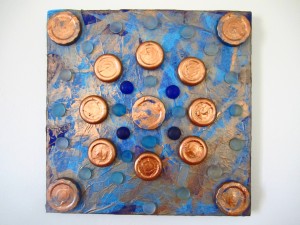We continue our interview with Margeaux Gray. In this part of the interview, Margeaux talks about her work on the Executive Committee of the National Survivor Network, testifying on human trafficking in order to change laws and her work as an artist. Her piece “Ocean in a Drop” recently accompanied Melysa Sperber, Director of Alliance to End Slavery and Trafficking (ATEST), blog highlighting the importance of working “with, not for” survivors.
You can learn more about her from her website: geauxfreedom.wordpress.com, follow her on Twitter @geauxfreedom, and her Facebook page.
You can read the first part of her interview here
____________________________________________________________

6. Tell us about your work as an anti-human trafficking advocate.
I share my strengths, skills, and wisdom as a member of the National Survivor Network (NSN) Executive Committee and as an Advisory Board member for To The Market. In January 2013 I testified in Washington D.C. at The Congressional Briefing: Combatting Modern Slavery. I also testified to the New Hampshire Criminal Justice Committee on behalf of SB317, a bill constructed to strengthen protections for human trafficking victims; it passed unanimously and has been signed into law. I have talked at schools, community events and write op-eds.
7. You are also an artist now. Can you tell us about your art and your thoughts on how art can help survivors heal? Are there any particular ways in which you use your art to maximise raising awareness about human trafficking and violence against women?
I am an artist. Art, for me, was a strategic way for me to cope and find some freedom when I had little. Through my healing it has allowed me a way to process my emotions resulting from being trafficked. Today I use it as an extension of my voice. I have specifically used visual art to educate, inspire, and empower others. Freedom of expression via art can aid a survivor’s healing process. This is why I believe strongly in The American Art Therapy Association’s definition of art therapy as “a mental health profession” and how it can be used to help people. The art therapist utilises art to “explore feelings, reconcile emotional conflicts, foster self-awareness, manage behavior and addictions, develop social-skills, reduce anxiety and increase self-esteem.”
8. How can individuals, families, and communities recognise the signs of sex/human trafficking and take steps to stop it?
They can start by educating themselves on what human trafficking is and what signs for which to look. Knowledge is power and they can share what they have learned with their family, friends, and community members. If they see something suspicious, say something – call and report it to authorities or a local anti-trafficking hotline. They can volunteer at a local anti-trafficking organisation. They can donate their time, skills, money, or needed supplies. No one is powerless to help end slavery.
9. How can The Pixel Project’s supporters, fans, and followers support your work and efforts to end sex/human trafficking in general?
I welcome you to visit my website geauxfreedom.wordpress.com, follow me on Twitter @geauxfreedom, like my Facebook page. If interested in booking me as a speaker at an event or to commision a piece of art, please visit my website and fill out the contact form. I appreciate your support. Supporting survivor leaders in this movement against trafficking is essential to ending slavery.
10. In your considered opinion, how can we end violence against women for good?
I believe we can end violence against women for good by involving survivor leaders in the strategic process to tackle the issue. One example of a strategic process is the three P’s of the Trafficking Victims Protection Act (TVPA). The three P’s of the TVPA are:
- Prosecution involves passing the appropriate laws that criminalise trafficking, and jailing the abusers who exploit other humans for profit.
- Protection involves identifying victims, providing them with medical care and shelter (and if necessary witness protection), and, when appropriate, repatriating them.
- Prevention involves raising awareness of the inhumane practices involved in the trafficking trade and promoting a paradigm shift that seeks to reduce the demand for the “fruits” of human trafficking.
We need to start educating our young. I believe in implementing an evidence-based programme/workshop in schools that involves educating children about abuse, healthy self-esteem, and positive relationships, and empowering them to use their voice to report if something happens to them.
Finally, the community has to understand that ignoring the issue won’t make it go away. Addressing it, taking a strong stance against it, and supporting survivors will.
One thought on “Inspirational Interview: Margeaux Gray – Part II”
Comments are closed.